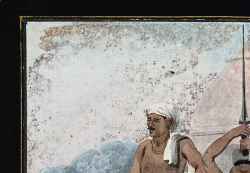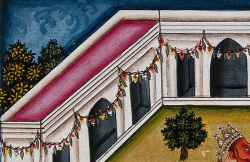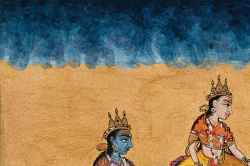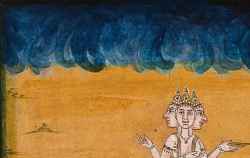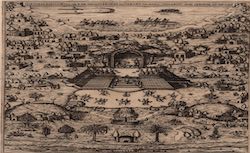Topic: 2. Sacrifice and religion: Comparisons, Antiquarians, Anthropology (16th-18th Century)
Religious sacrifices across various cultures and contexts sparked widespread interest in Early Modern Europe. As Christianity expanded into regions inhabited by "infidels" and "pagans", Europeans encountered a diverse array of sacrificial customs, ranging from the Sati rituals in India to the Aztec sacrifices in the Americas. This cross-cultural exposure captivated a wide audience, including theologians, philosophers, political thinkers, antiquarians, orientalists, missionaries, poets, artists, and even the general public. These encounters broadened the European understanding of sacrifice and led to a critical reassessment of classical and biblical sacrificial rites. This section includes:
- Sources: A selection of early modern printed materials, which include descriptions of the Americas, Asia, and Africa, alongside antiquarian and philological studies on religious sacrifice in classical antiquity and beyond. It also presents early modern works of ethnological observations and the first attempts to compare different sacrificial practices in various traditions and contexts, laying the groundwork for disciplines like the history of religions and anthropology.
- Iconographic Representations: A rich collection of images from the 16th to 18th centuries, illustrating a range of sacrificial rituals and practices as seen in different cultural and geographical contexts.
- Related Bibliography: An extensive bibliography spanning scholarly works from the 19th to 21st centuries, providing contemporary analyses and interpretations of these early studies and observations.
The Sacrifice of Isaac (Armenian Gospel Book) (1386)
from: Lake Van, Turkey
Getty Museum, Armenian Ms. Ludwig II 6 (83.MB.70), fol. 5v
Sacrifice of leopards was the prerogative of the king. Captured leopards were sacrified at the annual Igue ceremony. (16th-17th)
from: Benin City, Nigeria [Benin Brass Plaques]
Four priests perform a yagna, a fire sacrifice to Agni [1800-1900]
London, Wellcome Collection
Nine female deities (?) performing a yagna, a fire sacrifice (1800-1900)
London, Wellcome Collection
Vishnu, Brahman and three other deities perform a yagna, a fire sacrifice (1800-1899)
London, Wellcome Collection
The Sacrifice of Isaac (17th)
from: Project on engraved sources of Spanish colonial art
Iglesia de San Martín, Potosí, Bolivia
The Path of Power: Impurity, Kingship, and Sacrifice in Assamese Tantra
in: Journal of the American Academy of Religion , v. 69 (2001), issue : pp.777-816.
Tipus sacrificiorum que in maniter indi faciebant in novo indiarum orbe precipue in Mexico (1579)
from: D. Valadés, Rhetorica christiana: ad concionandi et orandi usum accommodata, utriusque facultatis exemplis suo loco insertis, quae quidem, ex indorum maxime deprompta sunt historiis, unde praeter doctrinam, summa quoque delectatio comparabitur, Pietro Giacomo Petrucci, Perugia 1579, p. 172
Inka llama offerings from Tambo Viejo, Acari Valley, Peru
in: Antiquity, v. 94 (2020), issue 378: pp.1-18.
Kingship and Sacrifice. Ritual and Society in Ancient Hawaii
Chicago: Chicago Univ. of Chicago Press, 1985.
Wild Victims: Hunting as Sacrifice and Sacrifice as Hunting in Huaulu
in: History of Religions, v. 34 (1994), issue 2: pp.101-131.
Those Who Have Seen Blood. The Memory of Sacrifice in Huaulu Initiation
in: For the Sake of our Future. Sacrificing in Eastern Indonesia, pp. 282-302
Leiden: ACSW, 1996.
Melquisedek, o El sacerdocio real
Buenos Aires: Itinerarium, 1959.
The Nonviolent Sacrifice : the Role of Tapasya in Nonviolence
in: Sacrifice in Modernity : Community, Ritual, Identity : from Nationalism and Nonviolence to Health Care and Harry Potter, pp. 89-105
Leiden: Brill, 2017.
The Sacrifice of Iphigenia (1755)
Metropolitan Museum of Art, New York
Political Murder and Sacrifice : from Roman Republic to Empire
in: Ancient Mediterranean Sacrifice, pp. 125-141
Oxford: Oxford University Press, 2011.



